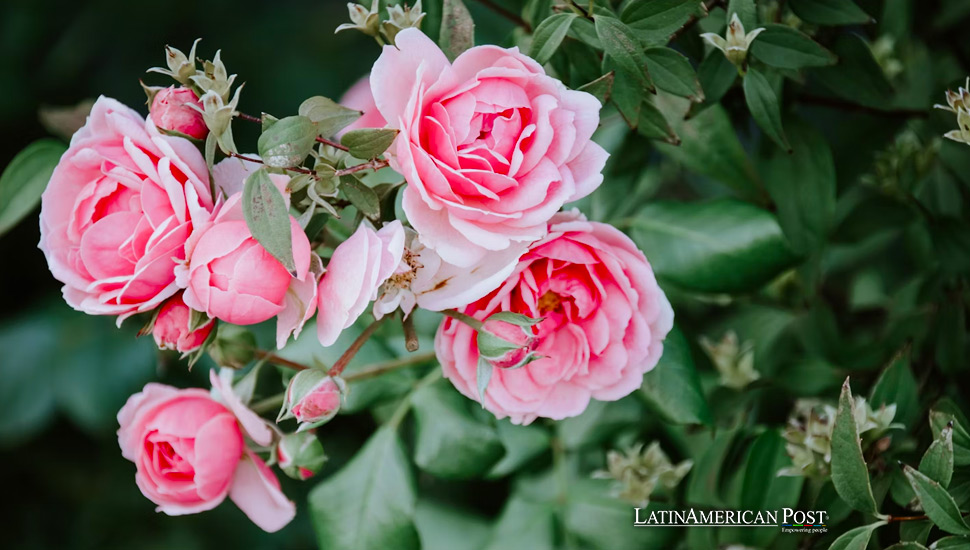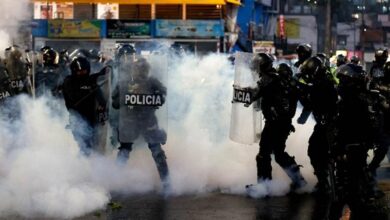Ecuador’s Flower Industry Blooms Amidst Challenges

In the lush landscapes of Ecuador, the vibrant flower industry, especially its world-renowned roses, stands tall, navigating through economic uncertainties and environmental hurdles. This feature delves into Ecuador’s blossoming role in the global floral market, highlighting the resilience and innovation of its growers.
Ecuador boasts a thriving flower industry, ranking as the world’s third-largest exporter of cut flowers, celebrated for its exquisite roses. However, this success story has its challenges. From economic fluctuations to environmental concerns, the industry navigates a complex landscape, demonstrating remarkable resilience and a commitment to adaptation. This feature explores the multifaceted ecosystem of Ecuador’s flower industry, from its historical roots to its present-day struggles and aspirations.
The story of Ecuador’s flower industry began in the 1980s with the introduction of Dutch technology and expertise. The country’s high altitude, abundant sunshine, and fertile volcanic soil proved ideal for rose cultivation. The Andean Trade Preference Act of the United States in 1991 further bolstered the industry, allowing for tax-free exports and leading to rapid growth. Over the years, the sector expanded beyond roses, cultivating various flowers like carnations, lilies, and gypsophila, catering to international preferences.
The Global Market
Today, Ecuador stands tall in the global flower market, exporting over $937 million of cut flowers in 2021. The United States remains the primary destination, accounting for over 40% of exports, followed by Europe and Russia. This prominent position comes with intense competition from other flower-producing countries like Colombia and Kenya. However, Ecuador’s unique climatic conditions, efficient transportation networks, and focus on quality control allow it to maintain its competitive edge.
The journey from a rosebud in Ecuador to a bouquet gracing international tables is a complex dance of logistics. Flowers are meticulously harvested, cooled, and packaged within hours to maintain freshness. Sophisticated cold chain infrastructure ensures they reach their global destinations in optimal condition, often within 24-48 hours.
The flower industry has undeniably played a significant role in Ecuador’s economic development. It is the sixth-largest non-oil export, generating substantial foreign exchange earnings and directly employing over 150,000 people, primarily in rural communities. These jobs uplift local economies, provide crucial income for families, and empower women, who form a significant portion of the workforce.
However, the industry is resistant to external economic forces. Global economic downturns can dampen demand for luxury items like flowers, impacting export volumes and employment opportunities. Additionally, fluctuating trade policies and competition from other countries can complicate the economic landscape.
Environmental Considerations
The environmental impact of flower cultivation remains a crucial concern. The industry is often associated with high water usage, intensive pesticide application, and land-use changes. While these factors pose challenges, many farms are actively adopting sustainable practices. This includes organic cultivation methods, integrated pest management to minimize reliance on harmful chemicals, and water conservation techniques like drip irrigation. These efforts demonstrate the industry’s growing commitment to environmental responsibility.
The story of Ecuador’s flower industry is intricately woven with the lives of its workers. While the industry offers employment opportunities and economic empowerment, concerns regarding labor rights and working conditions persist. Ensuring fair wages, safe work environments, and access to healthcare remain crucial aspects of creating a sustainable and ethical industry.
Beyond the immediate workforce, the industry also plays a role in community development. Many flower farms invest in local infrastructure projects, healthcare initiatives, and educational programs, contributing to the well-being of surrounding communities. Additionally, the strong presence of women in the workforce empowers them economically and fosters social change.
Technological advancements are continuously shaping the future of Ecuador’s flower industry. Greenhouse technology allows for controlled environments, optimizing resource utilization and reducing reliance on chemical pesticides. Automated systems streamline harvesting and sorting processes, improving efficiency and minimizing waste. Additionally, advanced breeding techniques are paving the way for new and disease-resistant flower varieties, further enhancing the industry’s competitive edge.
Cultural Significance
Flowers hold a deep cultural significance in Ecuadorian society. They are essential in various celebrations, from weddings and festivals to religious ceremonies and everyday expressions of affection. Flowers’ vibrant colors and delicate beauty are deeply ingrained in the national identity, reflecting a deep appreciation for nature and its bounty.
The vibrant blooms are not merely aesthetic; they carry symbolic weight within traditions and folklore. For instance, red roses adorn wedding bouquets, symbolizing passionate love and commitment. During the Inti Raymi festival, the “Festival of the Sun,” vibrant flower arrangements adorn streets and altars, paying homage to the sun god and celebrating the harvest. Additionally, indigenous communities have long used specific flowers in traditional medicine, attributing various healing properties to different varieties.
Beyond specific occasions, flowers are a ubiquitous expression of affection in Ecuadorian culture. From a single red rose signifying romantic interest to vibrantly colored bouquets gifted as tokens of appreciation, these floral gestures contribute to the warmth and vibrancy of daily life. The language of flowers transcends words, weaving a story of love, respect, and cultural heritage into the fabric of Ecuadorian society.
Future Outlook
Despite the challenges, the future of Ecuador’s flower industry appears promising. With a growing focus on sustainability, market diversification, and adaptation to climate change, the industry is poised to continue blooming.
Investing in Sustainability: Conscious consumers increasingly seek eco-friendly products, prompting a shift towards sustainable practices. Many farms embrace certifications like Fairtrade and Rainforest Alliance, ensuring ethical labor practices and environmentally responsible production methods. Additionally, research into alternative energy sources and water-saving techniques is crucial for long-term sustainability.
Market Diversification: Recognizing the volatility of relying on a few key markets, Ecuador wants to expand its reach. Exploring opportunities in emerging markets like China and the Middle East while strengthening existing partnerships can create a more balanced and resilient export ecosystem.
Adapting to Climate Change: The industry is adopting adaptation strategies as climate change impacts weather patterns and water availability. Investing in drought-resistant varieties, utilizing rainwater harvesting techniques, and exploring alternative growing methods like hydroponics are crucial to mitigating climate risks.
Also read: Ecuador’s Makes Bold Move Hiking VAT to Fund Anti-Crime Efforts Amid Fiscal Challenges
Ecuador’s flower industry is a testament to the nation’s ingenuity and resilience. Despite navigating economic fluctuations, environmental concerns, and social challenges, the industry continues to bloom, contributing significantly to the national economy and fostering community development. Recognizing the importance of balancing economic growth with environmental responsibility and adapting to a changing global landscape, Ecuador’s flower industry looks poised to continue captivating the world with its vibrant blooms.





